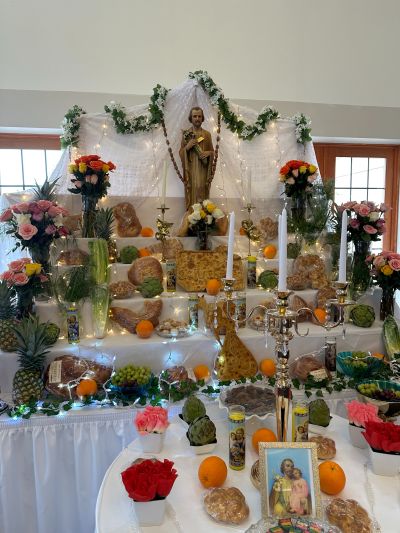Since its groundbreaking in 1999, the Italian American Community Center of Rochester has been a celebration destination. The three-story building offers 27,000 square feet of floor space with ballrooms, bocce courts, an Italian-style bar/cafe, offices, a boardroom/classroom, and an area for dancing.
Locals have booked the facility for weddings, proms, corporate events, engagement parties, birthday bashes, showers, reunions, fundraisers, and quinceañeras. They can also attend IACC events ranging from St. Joseph's Table and Festa Italiana to the Ferragosto Picnic and Christmas Gala.
It's a place to gather for food and fellowship while tapping into the traditions and history of immigrants from Italy's boot and islands. And no matter where you come from or your family history, "Everyone is Italian who walks through this door," says IACC Office Manager Cassandra Pettrone.
I spoke with Cassandra and her colleagues, Event Coordinator Erin Noll and Event Coordinator/Cook Sonia Amadio, about their nonprofit organization's efforts to preserve Italian culture, provide a sense of community, and reach younger generations.
How does the IACC maintain its ties to culture while reaching the community?
Erin: We have a strong membership. They'll have their family events here. We have biweekly luncheons where original members come together and prepare the meal with Sonia. We do the St. Joseph's Table, a picnic in June, Ferragosto in August, and the Gala every December. At this past year's Gala, we were able to donate to a local organization called It's About Caring for Kids.
A past IACC St. Joseph's Table. Learn more about this tradition here.
How is IACC engaging with younger generations?
Sonia: We've had Italian classes in the past. We're actually looking at doing cooking classes—Cooking with Nonna—in the future.
It's hard to pull in the younger generation because they're involved in many different activities and sports. For my generation, it wasn't that way. Our parents had a lot more time to bring back to the community, to be here, and to do so many things for the Italian American Community Center. So, we're looking into activities to bring them back, where they can engage with their grandparents or parents.
Cassandra: I continue to do this type of work in my adult life because of my background. I have always felt very connected with my heritage and where my family came from in Agrigento, Sicily. I took Italian classes from seventh to eleventh grade in high school. So, part of it is finding people who care about their heritage, culture, and continuing traditions.
IACC caters and hosts weddings, banquets, corporate functions, and school events.
What experience do you hope to share?
Erin: I did not grow up Italian like Sonia and Cassandra. So for me, it's nice. I love learning about the different traditions and the culture. I try really hard to learn the language. I love hearing the stories of how things happened back when members lived in Italy and stories of coming over here. My absolute favorite thing is just learning their history and how everything came about—and then seeing them come together and how everybody's sauce is made. It's like a big family where we can all get together and share stories and feel welcomed.
Sonia: Most members have been here since the very start, so this is their second home. They take pride in the Italian American Community Center and can carry on their traditions. When I cook for luncheons with the members, we come together to bring home cooking back. It is a great community.
Cassandra: The part of the job I love is touching my family's Italian roots and tying them into my everyday life. I feel like our mission is to emulate that with anyone who walks in our building so that they can feel that Italian-American family atmosphere and feel like they're at home, too.
"Everyone is Italian who walks through this door," says IACC Office Manager Cassandra Pettrone.
If you enjoyed this article, consider subscribing to my newsletter for more content and updates!









